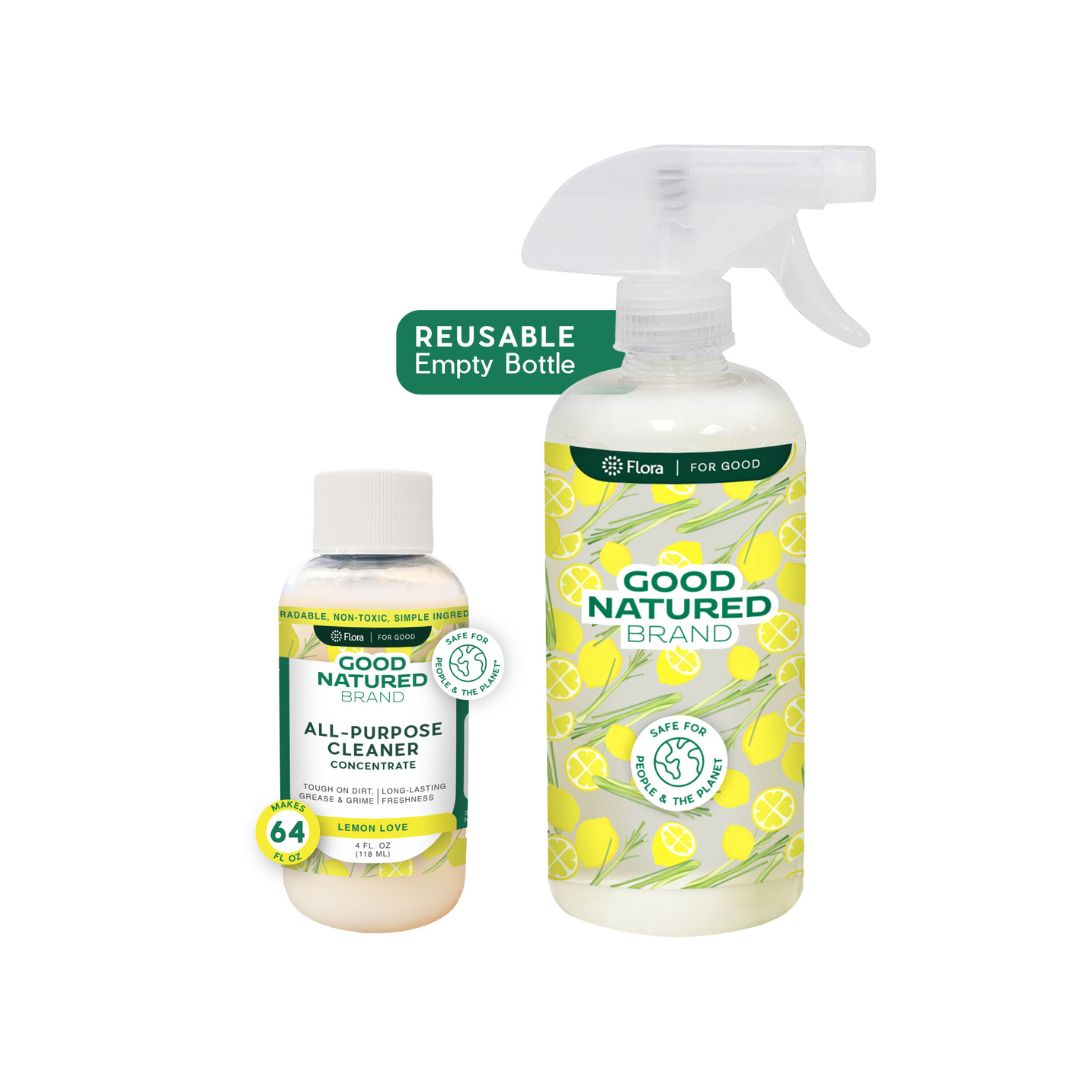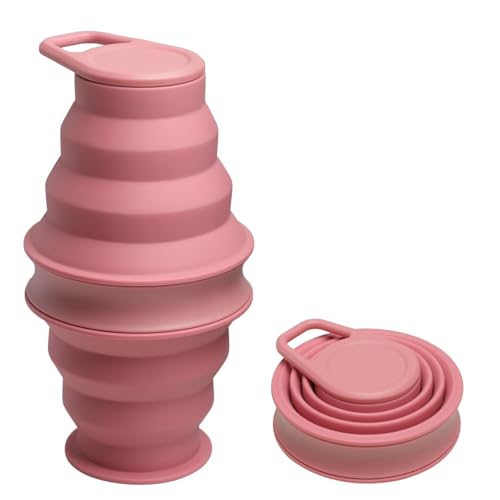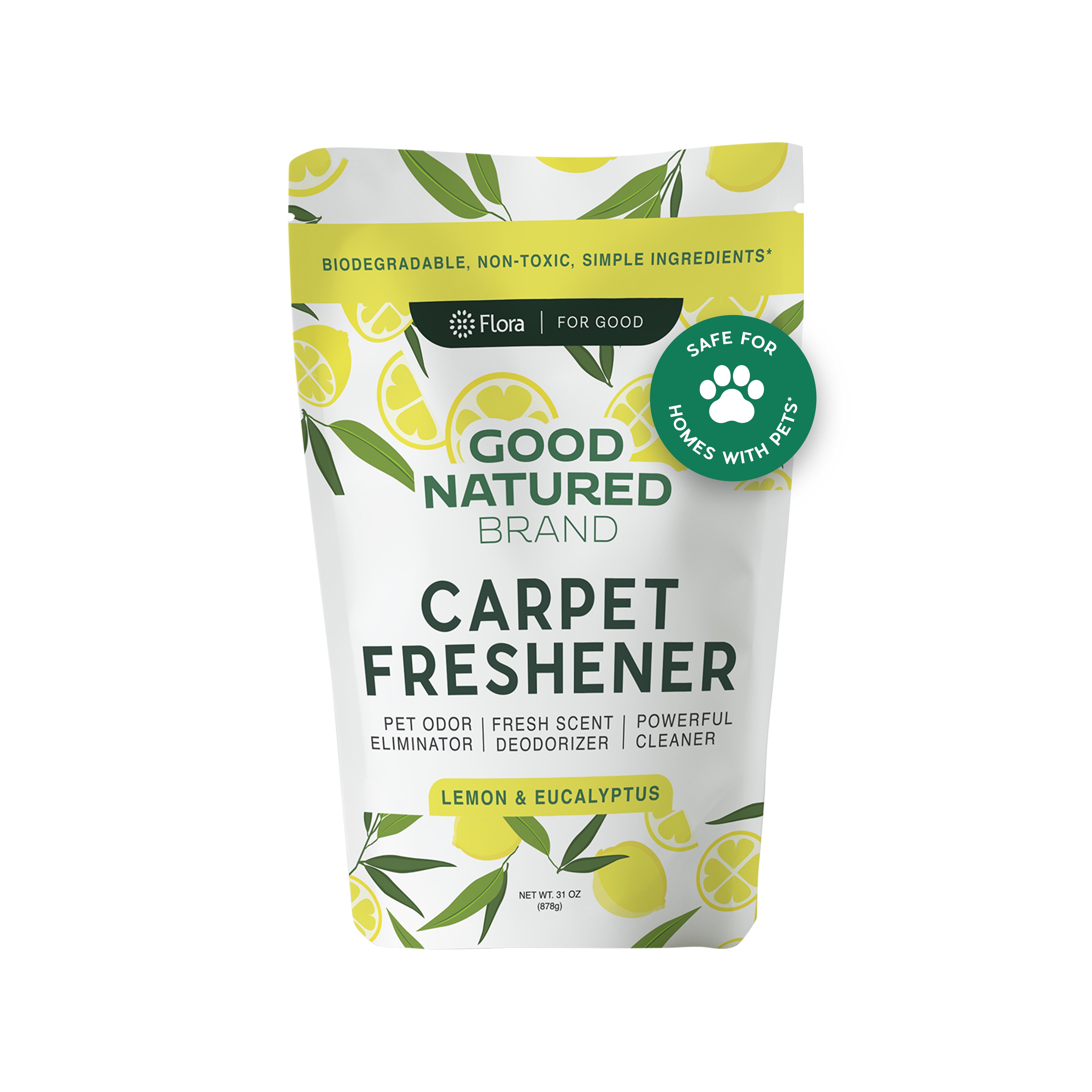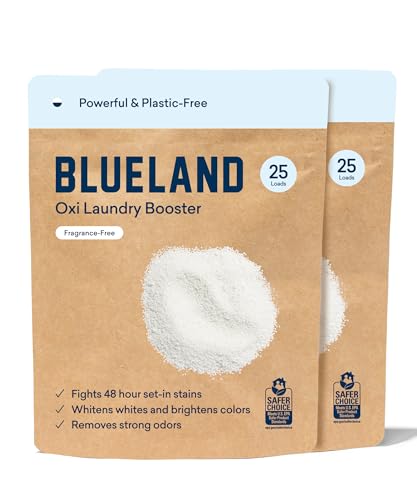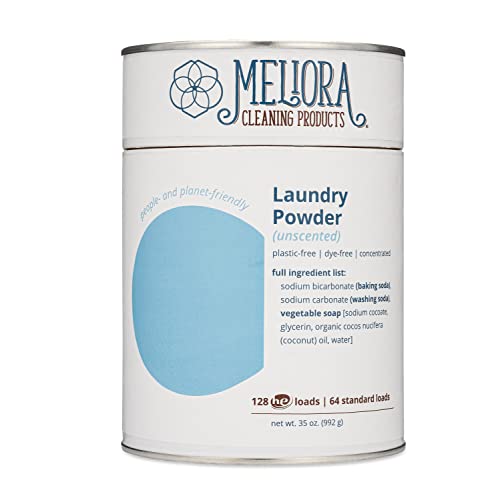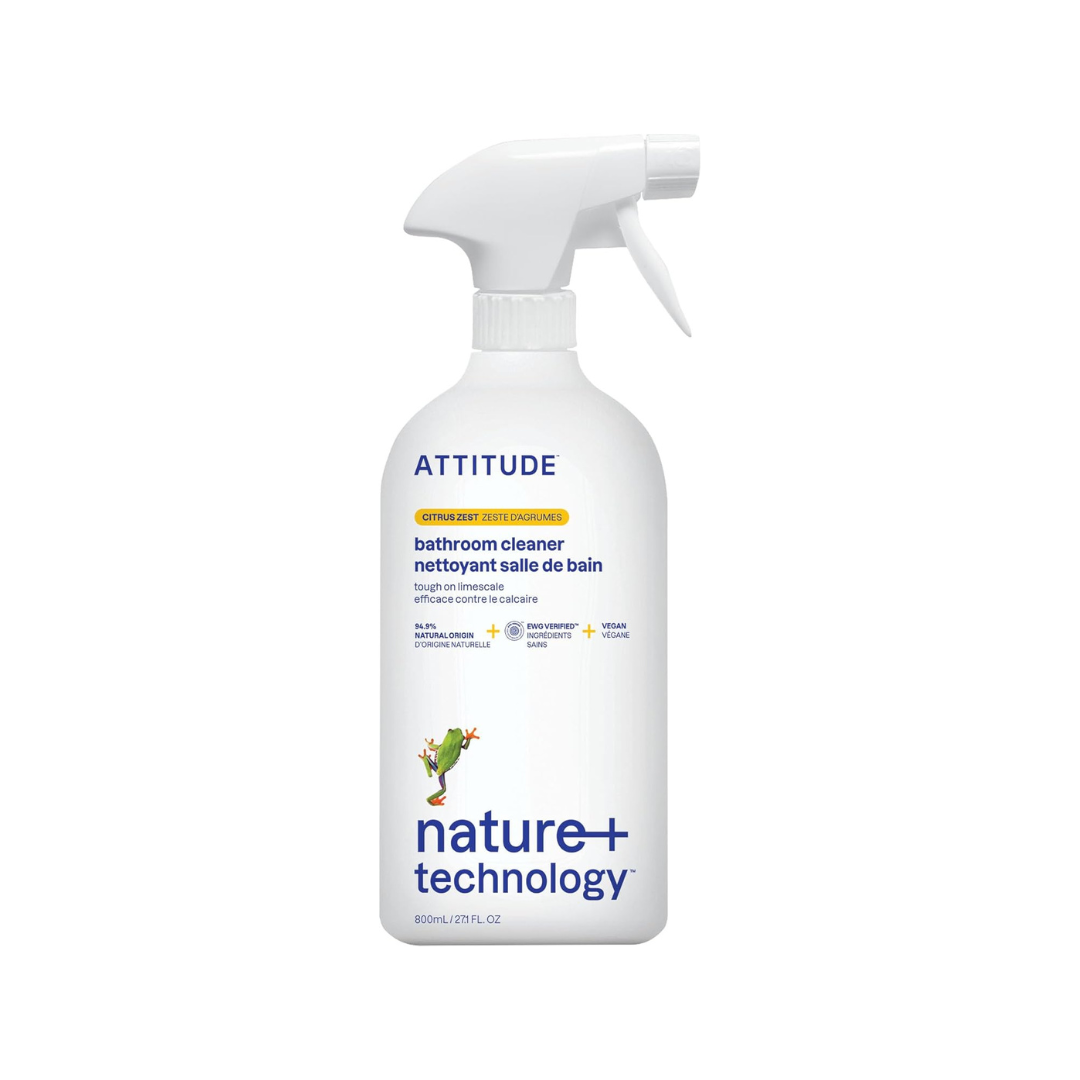
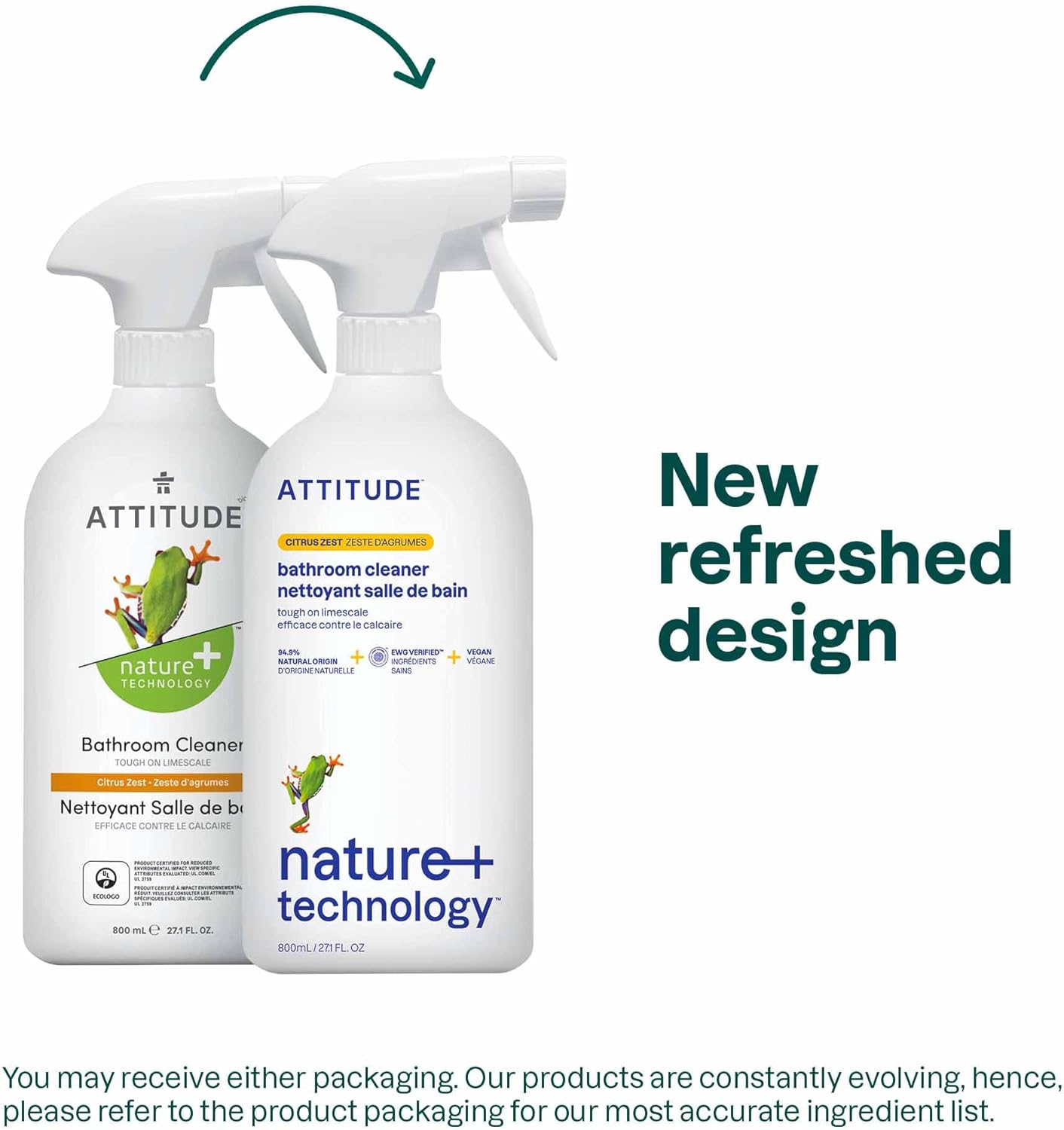
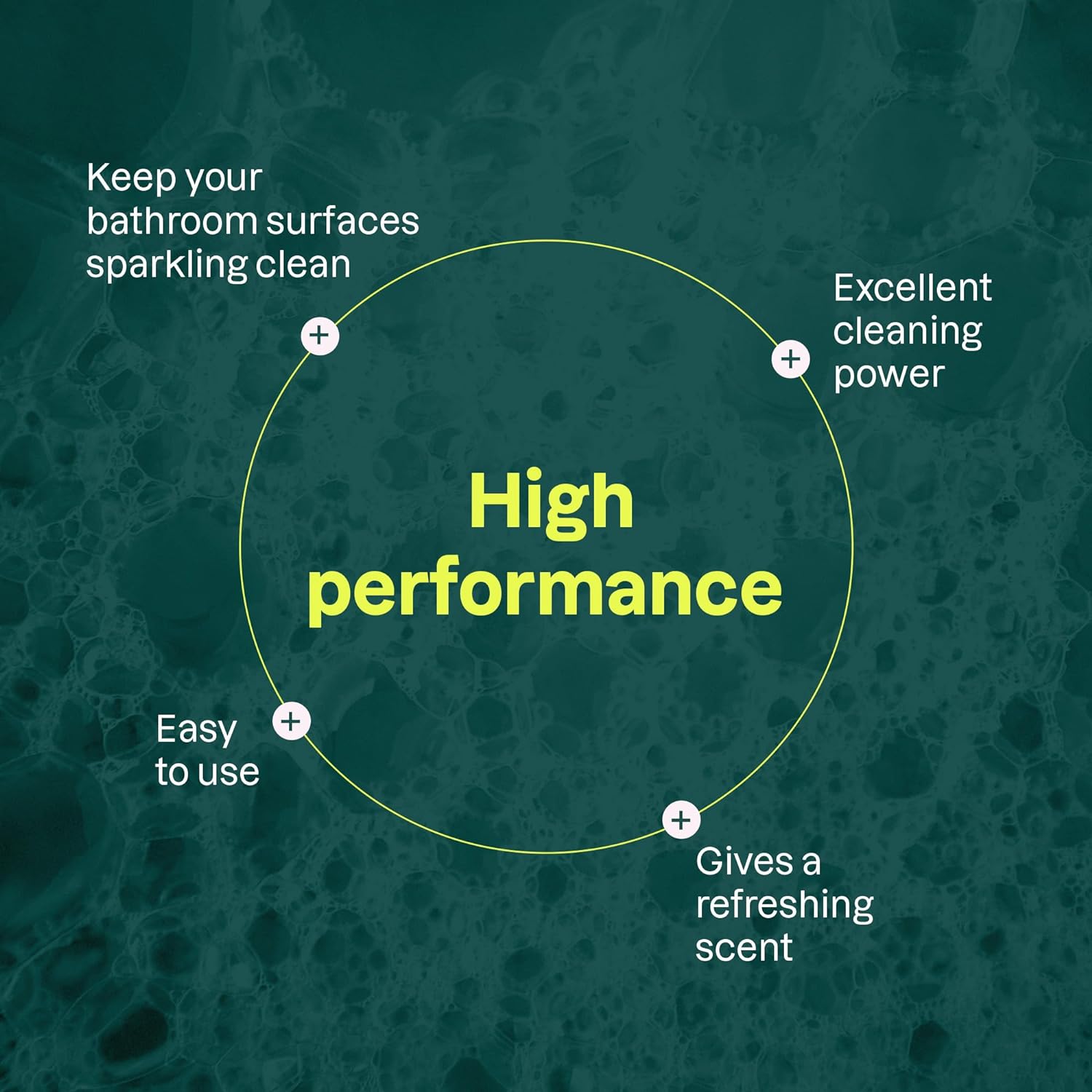
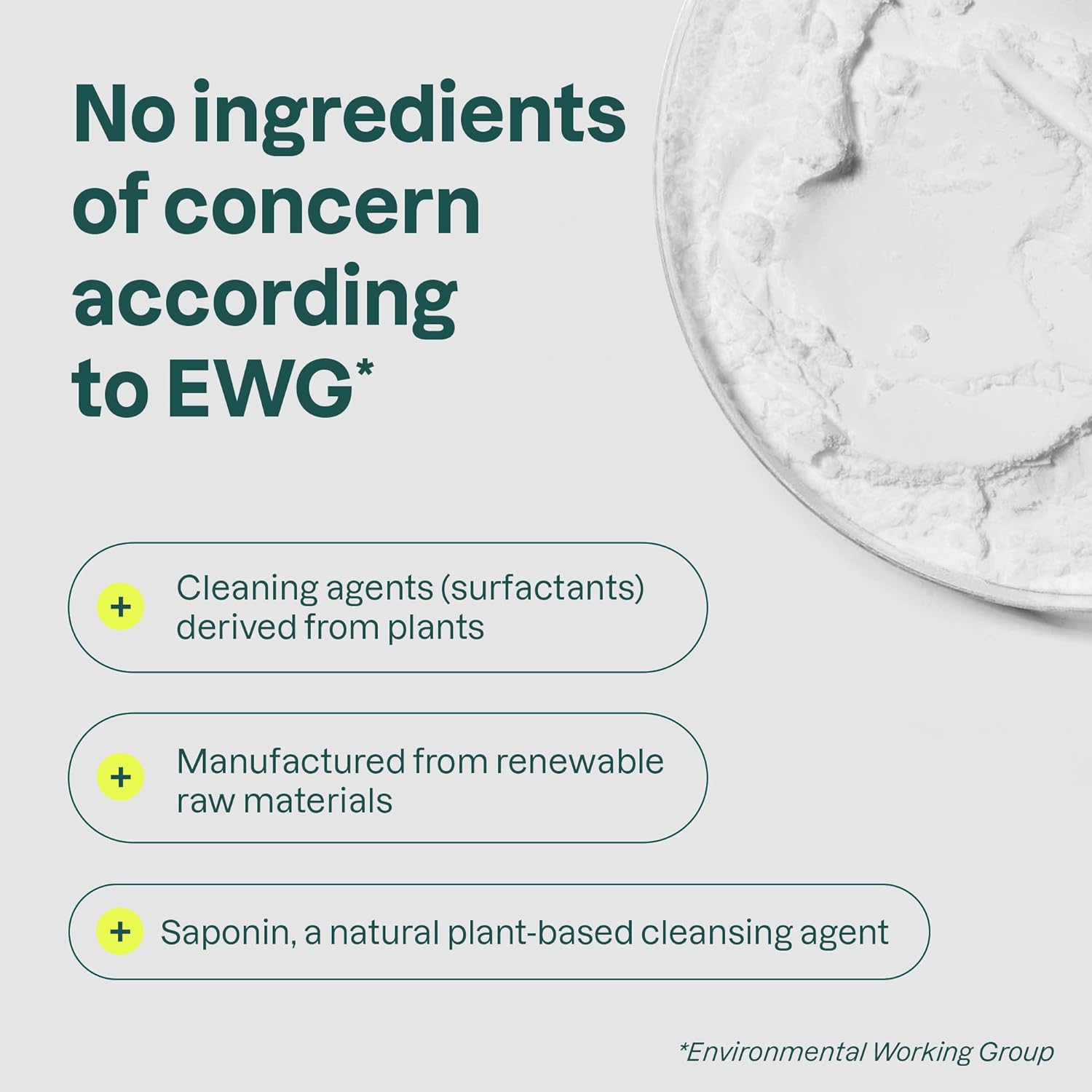
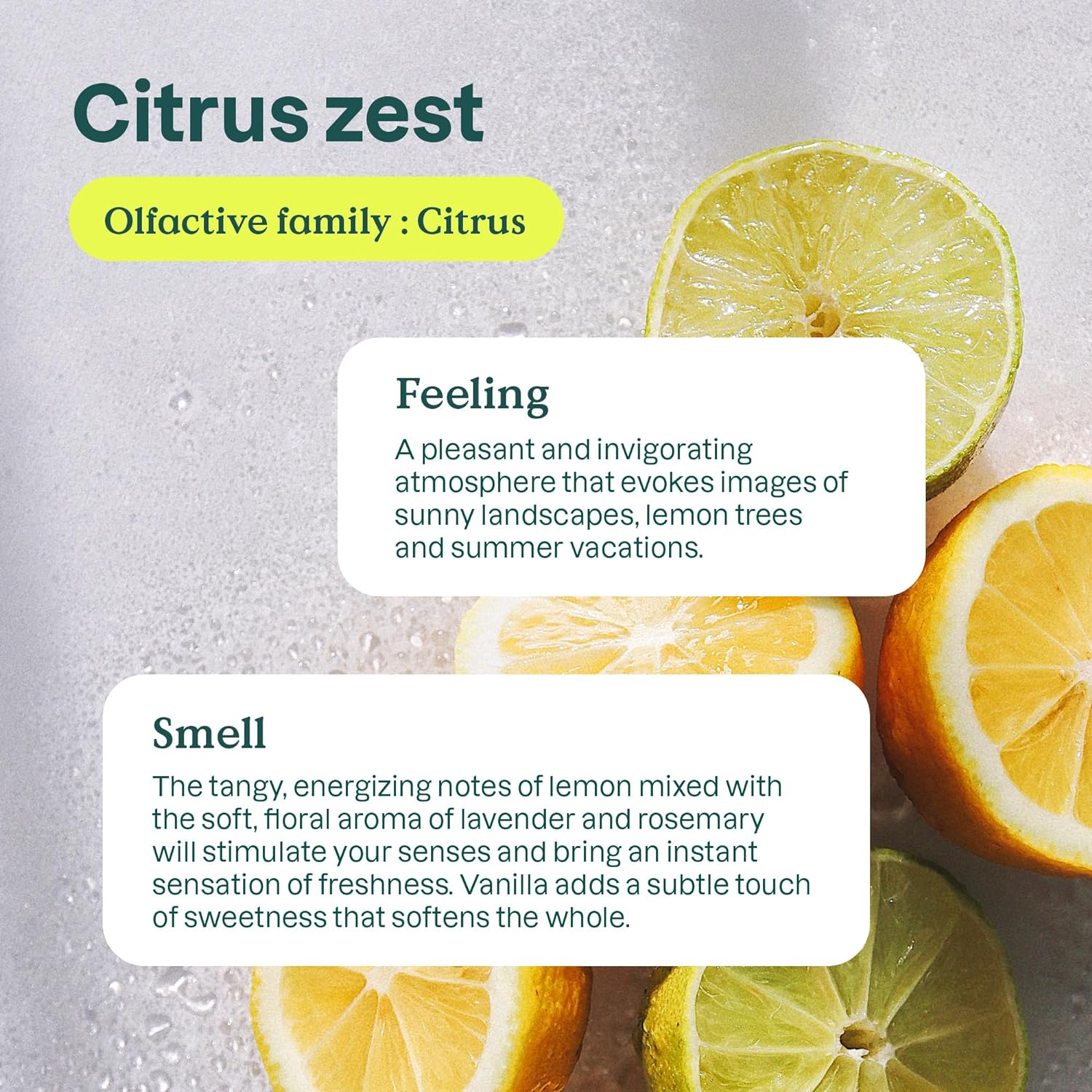
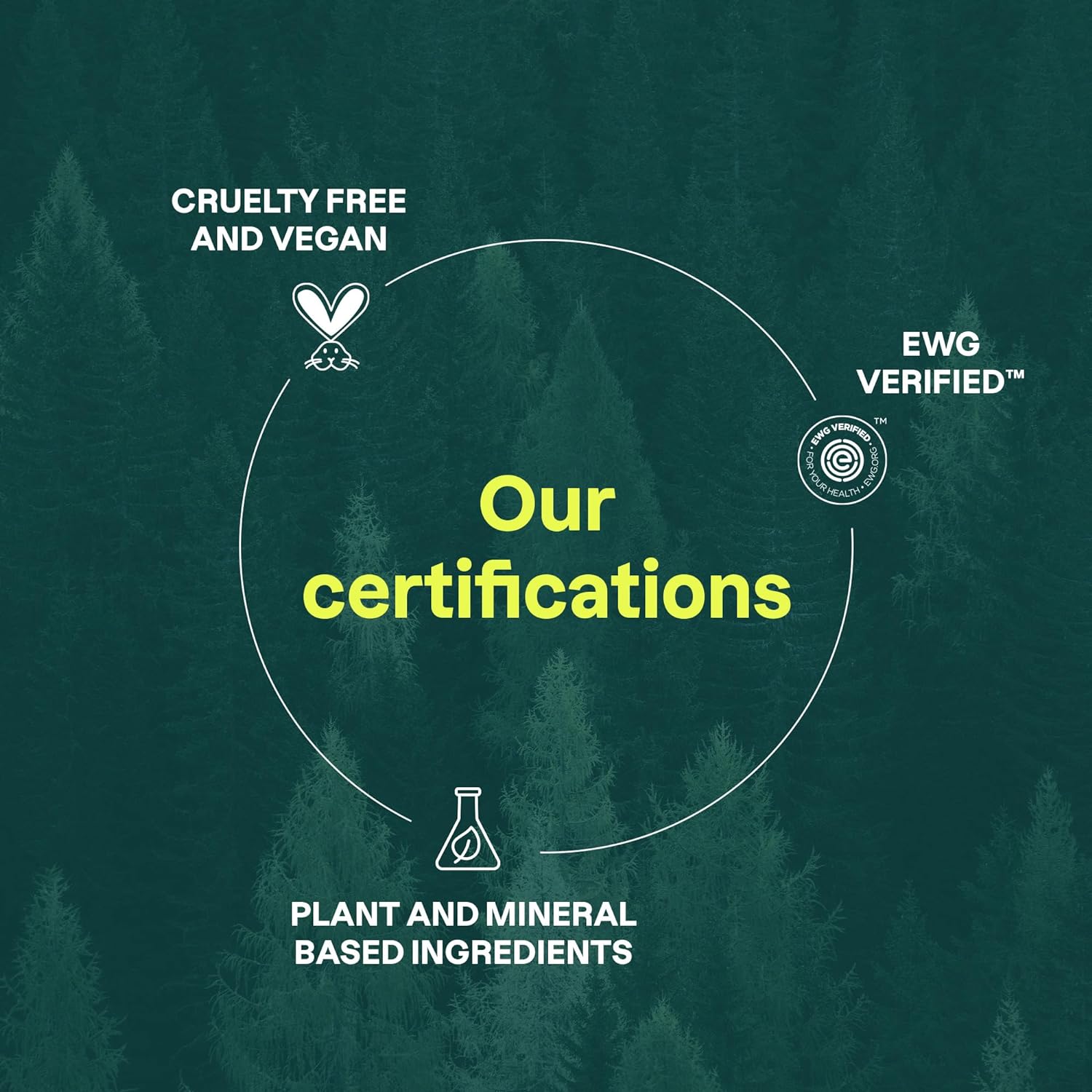
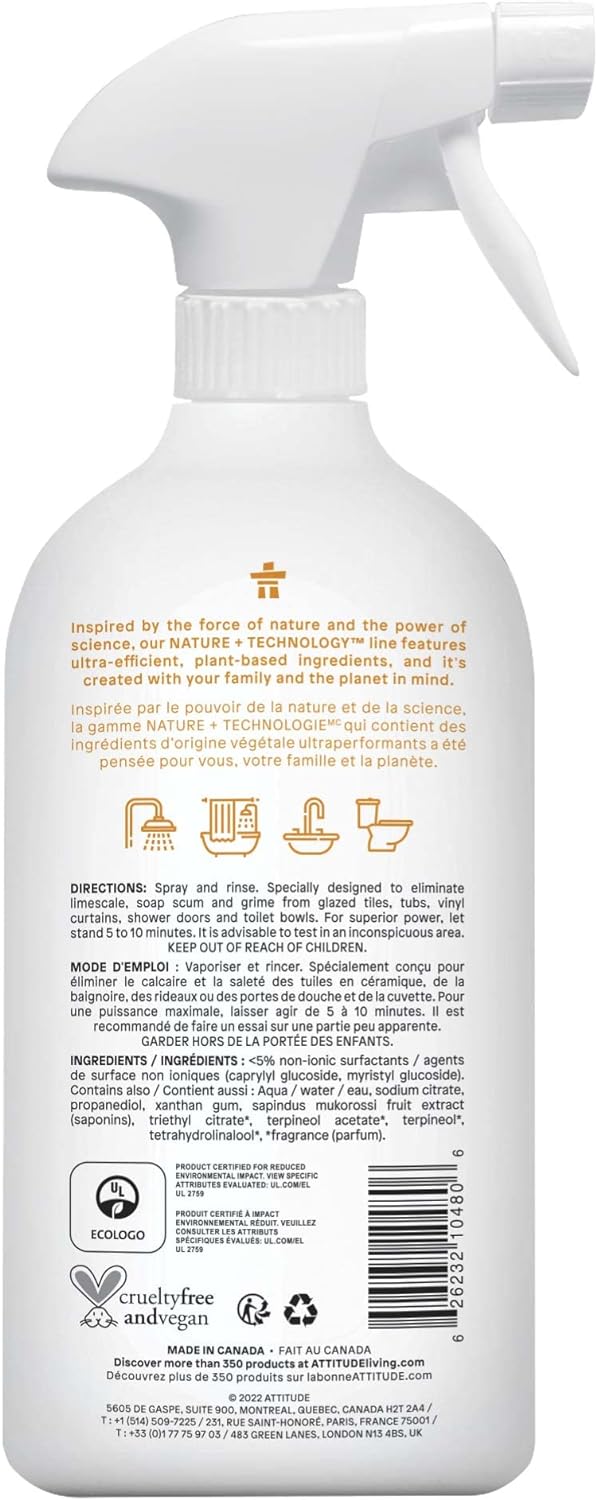
ATTITUDE Bathroom Cleaner - EWG Verified, Plant-Based, Vegan, Citrus Zest - 27.1 Fl Oz


Sodium Hydroxide
High RiskSodium hydroxide is a highly caustic and reactive inorganic compound commonly used as a pH adjuster in various products. It is effective in neutralizing acids and plays a role in the production of soaps and detergents.
Sustai Insights
Sodium hydroxide serves essential functions, particularly in adjusting pH levels, but poses significant health risks, including skin and eye irritation. It is subject to high usage restrictions due to its corrosive nature. Environmental concerns include its potential to pollute water sources and contribute to ecosystem damage. Regulatory bodies have imposed strict guidelines on its use, indicating a high-risk profile for products containing this ingredient. Safe handling practices are crucial, and alternatives include milder pH adjusters, emphasizing the need for caution in its application.
Terpineol
High RiskTerpineol is a mixture of isomers of the terpene alcohol found in various essential oils. It is commonly used in cosmetics and personal care products for its fragrance and potential antimicrobial properties.
Sustai Insights
Terpineol offers functional benefits as a fragrance and has potential antimicrobial properties. However, it carries a high allergy risk and is associated with contamination concerns. It is generally regarded as low risk for carcinogenicity and reproductive toxicity. Regulatory bodies have not imposed significant restrictions, but caution is advised for sensitive individuals. Overall, terpineol presents a high risk due to its allergenic potential and contamination issues. Safe usage practices should be followed, and alternatives like linalool or naturally derived fragrance components may be considered.
Tetrahydrolinalool
Medium RiskTetrahydrolinalool is a terpene alcohol commonly used in fragrance formulations and as a potential solvent or emulsifier. It is primarily derived from natural sources such as lavender and other essential oils, contributing to its presence in various personal care and household products.
Sustai Insights
Tetrahydrolinalool offers functional benefits as a fragrance component and is biodegradable, which may support sustainable practices. However, it poses moderate health risks, particularly concerning allergies and immunotoxicity, while showing low concerns for carcinogenicity and reproductive toxicity. Environmental risks include contamination, though it is not bioaccumulative. Regulatory status is not prohibitive, but caution is advised due to potential sensitivities. Overall, this ingredient presents a medium risk profile, suggesting careful usage and consideration of alternatives, especially for sensitive individuals.
Citric Acid
Medium RiskCitric acid is an alpha hydroxy acid used in personal care products primarily for its role as a pH adjuster and natural preservative. It occurs naturally in citrus fruits and is commonly utilized in various formulations for its chelating properties and mild exfoliation benefits.
Sustai Insights
Citric acid offers functional benefits as an effective preservative and pH stabilizer, contributing to product longevity and stability. It is biodegradable and derived from renewable sources. Health risks are low, with minimal concerns regarding carcinogenicity, allergies, and reproductive toxicity. However, moderate use restrictions exist due to potential irritation at high concentrations. Environmental risks are limited, as citric acid is not known to accumulate in ecosystems. Regulatory agencies have no significant advisories against its use. Overall, it is assessed as a medium-risk ingredient, with safe usage practices recommended and alternatives available.
Triethylhexyl Citrate
Low RiskTriethylhexyl citrate is a triester of 2-ethylhexanoic acid and glycerin. It functions primarily as a skin-conditioning agent and emollient in cosmetic formulations, enhancing the texture and feel of products while providing moisture retention.
Sustai Insights
Triethylhexyl citrate offers functional benefits as a skin-conditioning agent, promoting moisture retention and product stability. It is considered to have low health risks, including negligible concerns regarding carcinogenicity, allergies, and reproductive toxicity. Environmentally, it poses minimal pollution risk and is not bioaccumulative. Regulatory assessments indicate no significant concerns, affirming its low-risk status overall. Safe usage practices are recommended, and while safer alternatives exist, this ingredient remains a suitable choice in formulations.
Xanthan Gum
Low RiskXanthan gum is a polysaccharide, a sugar-based compound produced by the fermentation of glucose or sucrose. It is commonly used as a thickening agent and stabilizer in various food and cosmetic products due to its ability to improve texture and prevent ingredient separation.
Sustai Insights
Xanthan gum serves effectively as a thickener and stabilizer, enhancing product texture and consistency. It is biodegradable and typically derived from renewable sources, supporting sustainability efforts. Health risks are minimal, with low concerns regarding carcinogenicity, allergies, and reproductive toxicity. Environmental impact is similarly low, posing no significant hazards. Regulatory agencies, including the FDA, regard it as safe for use, with no significant restrictions. Overall, xanthan gum is assessed as low risk, making it a suitable ingredient in formulations.
Myristyl Glucoside
Low RiskMyristyl glucoside is a surfactant derived from myristic acid and glucose. It functions primarily as an emulsifier and cleansing agent in cosmetic and personal care products, helping to stabilize formulations and enhance the texture of products.
Sustai Insights
Myristyl glucoside offers functional benefits as an effective emulsifier and surfactant, contributing to product stability and usability. It is biodegradable and can be sustainably sourced. Health risks are generally low, with minimal concerns regarding irritancy, allergies, or reproductive toxicity. Environmental risks are also low, with no significant pollutant or bioaccumulation potential. Regulatory bodies do not impose significant restrictions on its use, indicating a low overall risk level. Safe usage practices should be followed, and potential alternatives include other plant-derived surfactants. Overall, the ingredient is assessed as low risk.
Propanediol
Low RiskPropanediol is a glycol compound commonly used in cosmetic and personal care products as a solvent, humectant, and skin-conditioning agent. It serves to enhance the texture and moisture retention of formulations, contributing to overall product efficacy.
Sustai Insights
Propanediol offers functional benefits such as effective moisture retention and improved product application. It is considered low-risk in terms of health concerns, with minimal associations with carcinogenicity, allergies, or reproductive toxicity. Environmentally, it has low pollutant potential and is not bioaccumulative. Regulatory bodies have not placed restrictions on its use. Despite concerns regarding enhanced skin absorption and potential endocrine disruption, the overall assessment indicates low risk. Safe usage practices should be followed, and alternatives like glycerin or other plant-based humectants can be considered.
Terpineol Acetate
Low RiskTerpineol acetate is an ester of acetic acid and terpineol, commonly used in cosmetics and personal care products for its fragrance and potential skin-conditioning properties.
Sustai Insights
Terpineol acetate functions effectively as a fragrance component and may offer skin-conditioning benefits, contributing to product appeal. Health-wise, it shows low concerns regarding carcinogenicity, allergies, and reproductive toxicity, with minimal environmental impact. Regulatory bodies have indicated low-risk status, and there are no significant restrictions noted. Overall, the risk level associated with terpineol acetate is low, making it a viable ingredient in formulations. For safer alternatives, consider other natural esters or essential oils.
Water
Low RiskWater is a clear, colorless liquid essential for various biological processes. It serves as a solvent in formulations, facilitating the dissolution of other ingredients and enhancing product texture and application. Additionally, water plays a crucial role in hydration and is a key component in many cosmetic and personal care products.
Sustai Insights
Water is an effective solvent and hydrator, contributing to the texture and efficacy of formulations. It is biodegradable and generally regarded as safe, with low concerns regarding carcinogenicity, allergies, and reproductive toxicity. However, excessive water usage can lead to environmental concerns, particularly regarding resource depletion. Regulatory bodies do not impose restrictions on water use in cosmetics. Overall, the risks associated with water are low, making it a safe and essential ingredient.
Caprylyl Glucoside
Low RiskCaprylyl glucoside is a surfactant derived from coconut oil and glucose, commonly used in cosmetic formulations. It functions as a cleansing agent that helps to solubilize oils and dirt, allowing for effective cleansing in personal care products. This ingredient is often included in formulations that require mildness and compatibility with skin.
Sustai Insights
Caprylyl glucoside exhibits functional benefits as a mild surfactant and cleanser, making it suitable for sensitive skin formulations. It is biodegradable and derived from renewable resources, enhancing its sustainability profile. Health risks are generally low, with minimal concerns for irritation and allergies. Regulatory assessments indicate it is safe for use with no significant restrictions. Given its low health and environmental risk profile, it is considered a low-risk ingredient overall. Users are advised to adhere to product instructions to minimize any potential irritation.
Sodium Hydroxide
High RiskSodium hydroxide is a highly caustic and reactive inorganic compound commonly used as a pH adjuster in various products. It is effective in neutralizing acids and plays a role in the production of soaps and detergents.
Sustai Insights
Sodium hydroxide serves essential functions, particularly in adjusting pH levels, but poses significant health risks, including skin and eye irritation. It is subject to high usage restrictions due to its corrosive nature. Environmental concerns include its potential to pollute water sources and contribute to ecosystem damage. Regulatory bodies have imposed strict guidelines on its use, indicating a high-risk profile for products containing this ingredient. Safe handling practices are crucial, and alternatives include milder pH adjusters, emphasizing the need for caution in its application.
Triethylhexyl Citrate
Low RiskTriethylhexyl citrate is a triester of 2-ethylhexanoic acid and glycerin. It functions primarily as a skin-conditioning agent and emollient in cosmetic formulations, enhancing the texture and feel of products while providing moisture retention.
Sustai Insights
Triethylhexyl citrate offers functional benefits as a skin-conditioning agent, promoting moisture retention and product stability. It is considered to have low health risks, including negligible concerns regarding carcinogenicity, allergies, and reproductive toxicity. Environmentally, it poses minimal pollution risk and is not bioaccumulative. Regulatory assessments indicate no significant concerns, affirming its low-risk status overall. Safe usage practices are recommended, and while safer alternatives exist, this ingredient remains a suitable choice in formulations.
Xanthan Gum
Low RiskXanthan gum is a polysaccharide, a sugar-based compound produced by the fermentation of glucose or sucrose. It is commonly used as a thickening agent and stabilizer in various food and cosmetic products due to its ability to improve texture and prevent ingredient separation.
Sustai Insights
Xanthan gum serves effectively as a thickener and stabilizer, enhancing product texture and consistency. It is biodegradable and typically derived from renewable sources, supporting sustainability efforts. Health risks are minimal, with low concerns regarding carcinogenicity, allergies, and reproductive toxicity. Environmental impact is similarly low, posing no significant hazards. Regulatory agencies, including the FDA, regard it as safe for use, with no significant restrictions. Overall, xanthan gum is assessed as low risk, making it a suitable ingredient in formulations.
Myristyl Glucoside
Low RiskMyristyl glucoside is a surfactant derived from myristic acid and glucose. It functions primarily as an emulsifier and cleansing agent in cosmetic and personal care products, helping to stabilize formulations and enhance the texture of products.
Sustai Insights
Myristyl glucoside offers functional benefits as an effective emulsifier and surfactant, contributing to product stability and usability. It is biodegradable and can be sustainably sourced. Health risks are generally low, with minimal concerns regarding irritancy, allergies, or reproductive toxicity. Environmental risks are also low, with no significant pollutant or bioaccumulation potential. Regulatory bodies do not impose significant restrictions on its use, indicating a low overall risk level. Safe usage practices should be followed, and potential alternatives include other plant-derived surfactants. Overall, the ingredient is assessed as low risk.
Propanediol
Low RiskPropanediol is a glycol compound commonly used in cosmetic and personal care products as a solvent, humectant, and skin-conditioning agent. It serves to enhance the texture and moisture retention of formulations, contributing to overall product efficacy.
Sustai Insights
Propanediol offers functional benefits such as effective moisture retention and improved product application. It is considered low-risk in terms of health concerns, with minimal associations with carcinogenicity, allergies, or reproductive toxicity. Environmentally, it has low pollutant potential and is not bioaccumulative. Regulatory bodies have not placed restrictions on its use. Despite concerns regarding enhanced skin absorption and potential endocrine disruption, the overall assessment indicates low risk. Safe usage practices should be followed, and alternatives like glycerin or other plant-based humectants can be considered.
Tetrahydrolinalool
Medium RiskTetrahydrolinalool is a terpene alcohol commonly used in fragrance formulations and as a potential solvent or emulsifier. It is primarily derived from natural sources such as lavender and other essential oils, contributing to its presence in various personal care and household products.
Sustai Insights
Tetrahydrolinalool offers functional benefits as a fragrance component and is biodegradable, which may support sustainable practices. However, it poses moderate health risks, particularly concerning allergies and immunotoxicity, while showing low concerns for carcinogenicity and reproductive toxicity. Environmental risks include contamination, though it is not bioaccumulative. Regulatory status is not prohibitive, but caution is advised due to potential sensitivities. Overall, this ingredient presents a medium risk profile, suggesting careful usage and consideration of alternatives, especially for sensitive individuals.
Terpineol Acetate
Low RiskTerpineol acetate is an ester of acetic acid and terpineol, commonly used in cosmetics and personal care products for its fragrance and potential skin-conditioning properties.
Sustai Insights
Terpineol acetate functions effectively as a fragrance component and may offer skin-conditioning benefits, contributing to product appeal. Health-wise, it shows low concerns regarding carcinogenicity, allergies, and reproductive toxicity, with minimal environmental impact. Regulatory bodies have indicated low-risk status, and there are no significant restrictions noted. Overall, the risk level associated with terpineol acetate is low, making it a viable ingredient in formulations. For safer alternatives, consider other natural esters or essential oils.
Terpineol
High RiskTerpineol is a mixture of isomers of the terpene alcohol found in various essential oils. It is commonly used in cosmetics and personal care products for its fragrance and potential antimicrobial properties.
Sustai Insights
Terpineol offers functional benefits as a fragrance and has potential antimicrobial properties. However, it carries a high allergy risk and is associated with contamination concerns. It is generally regarded as low risk for carcinogenicity and reproductive toxicity. Regulatory bodies have not imposed significant restrictions, but caution is advised for sensitive individuals. Overall, terpineol presents a high risk due to its allergenic potential and contamination issues. Safe usage practices should be followed, and alternatives like linalool or naturally derived fragrance components may be considered.
Water
Low RiskWater is a clear, colorless liquid essential for various biological processes. It serves as a solvent in formulations, facilitating the dissolution of other ingredients and enhancing product texture and application. Additionally, water plays a crucial role in hydration and is a key component in many cosmetic and personal care products.
Sustai Insights
Water is an effective solvent and hydrator, contributing to the texture and efficacy of formulations. It is biodegradable and generally regarded as safe, with low concerns regarding carcinogenicity, allergies, and reproductive toxicity. However, excessive water usage can lead to environmental concerns, particularly regarding resource depletion. Regulatory bodies do not impose restrictions on water use in cosmetics. Overall, the risks associated with water are low, making it a safe and essential ingredient.
Citric Acid
Medium RiskCitric acid is an alpha hydroxy acid used in personal care products primarily for its role as a pH adjuster and natural preservative. It occurs naturally in citrus fruits and is commonly utilized in various formulations for its chelating properties and mild exfoliation benefits.
Sustai Insights
Citric acid offers functional benefits as an effective preservative and pH stabilizer, contributing to product longevity and stability. It is biodegradable and derived from renewable sources. Health risks are low, with minimal concerns regarding carcinogenicity, allergies, and reproductive toxicity. However, moderate use restrictions exist due to potential irritation at high concentrations. Environmental risks are limited, as citric acid is not known to accumulate in ecosystems. Regulatory agencies have no significant advisories against its use. Overall, it is assessed as a medium-risk ingredient, with safe usage practices recommended and alternatives available.
Caprylyl Glucoside
Low RiskCaprylyl glucoside is a surfactant derived from coconut oil and glucose, commonly used in cosmetic formulations. It functions as a cleansing agent that helps to solubilize oils and dirt, allowing for effective cleansing in personal care products. This ingredient is often included in formulations that require mildness and compatibility with skin.
Sustai Insights
Caprylyl glucoside exhibits functional benefits as a mild surfactant and cleanser, making it suitable for sensitive skin formulations. It is biodegradable and derived from renewable resources, enhancing its sustainability profile. Health risks are generally low, with minimal concerns for irritation and allergies. Regulatory assessments indicate it is safe for use with no significant restrictions. Given its low health and environmental risk profile, it is considered a low-risk ingredient overall. Users are advised to adhere to product instructions to minimize any potential irritation.
Discover the ATTITUDE Bathroom Cleaner, a powerful and eco-friendly solution for your bathroom cleaning needs. With its refreshing Citrus Zest scent, this cleaner is designed for those who prioritize health and sustainability in their homes.
- EWG Verified: Enjoy peace of mind with clean ingredients and full transparency, ensuring safety for your family and the environment.
- Natural Origin: Made with ≥ 94% naturally sourced ingredients, this cleaner effectively tackles tough grime without harmful chemicals.
- Effective Cleaning Power: Harnesses the cleaning properties of powerful natural ingredients to eliminate limescale and dirt from surfaces like tiles, bathtubs, and toilet bowls.
- Recyclable Packaging: The bottle is made from easily recyclable HDPE #2 plastic, contributing to a healthier planet.
- Vegan & Cruelty-Free: PETA certified, ensuring no animal testing and 100% vegan ingredients, aligning with ethical consumer values.
Subscribe & Save with Sustai
- Best Price Guarantee: Always enjoy the lowest prices on sustainable home essentials.
- No Surprises: We’ll notify you before shipping. No hidden fees, ever.
- You’re in Charge: Change, pause, or cancel your subscription anytime with ease.
- Eco-Friendly Deliveries: Our grouped shipments mean less packaging and lower emissions.
Join us on a sustainable journey. Special offers for a limited time! Prices and promotions may change.
Recommended Products
Discover the ATTITUDE Bathroom Cleaner, a powerful and eco-friendly solution for your bathroom cleaning needs. With its refreshing Citrus Zest scent, this cleaner is designed for those who prioritize health and sustainability in their homes.
- EWG Verified: Enjoy peace of mind with clean ingredients and full transparency, ensuring safety for your family and the environment.
- Natural Origin: Made with ≥ 94% naturally sourced ingredients, this cleaner effectively tackles tough grime without harmful chemicals.
- Effective Cleaning Power: Harnesses the cleaning properties of powerful natural ingredients to eliminate limescale and dirt from surfaces like tiles, bathtubs, and toilet bowls.
- Recyclable Packaging: The bottle is made from easily recyclable HDPE #2 plastic, contributing to a healthier planet.
- Vegan & Cruelty-Free: PETA certified, ensuring no animal testing and 100% vegan ingredients, aligning with ethical consumer values.

You can have at most 2 Sustainable Steals products in your cart
Customer Reviews
Customers’ View
Customers appreciate the effectiveness and eco-friendly nature of the Bathroom Cleaner Spray. Many highlight its powerful cleaning capabilities, noting it leaves surfaces fresh and streak-free without harsh chemicals. A common sentiment is that it rivals traditional cleaners while being non-toxic and safe for household use, with one user stating it cleans effectively without strong fumes. The pleasant citrus scent is frequently mentioned as a refreshing alternative to overpowering artificial fragrances. While most customers find it easy to apply and appreciate its plant-based ingredients, opinions on value for money vary, with some feeling it may be pricier than expected. Overall, users find this product aligns well with their commitment to a healthier and more sustainable lifestyle.
AI-generated from the text of customer reviewsThis product has no reviews yet.
